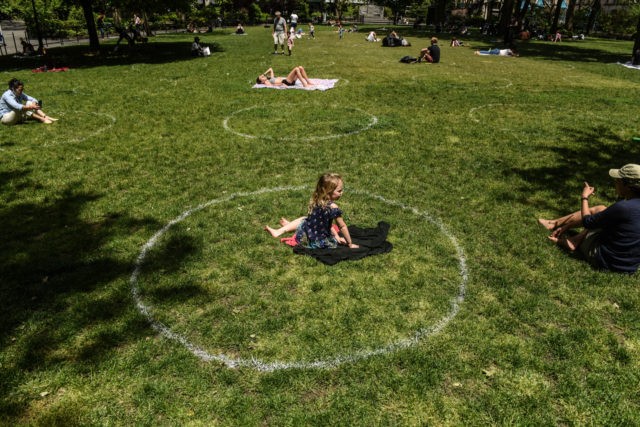One of the costs of last year’s social distancing measures is that fewer adult Americans set aside time to talk to their children on any given day.
Silver lining: the adults who were talking to their kids spent more time doing it.
The average time adults living with a child under 18 spent talking to children as their “primary activity” fell from 0.5 hours to 0.4 hours per day last year compared with the year before, according to data in the Bureau of Labor Statistics’ annual American Time Use Survey released Thursday.
The decline was entirely because of men, whose average time spent talking to children fell from 0.5 hours to 0.3 hours. The time women spent talking to children rose from 0.5 hours to 0.6.
The share of the grownups who talked to children fell to a daily average of 5.8 percent from 8.9 percent the year before. For men, it fell from 7.4 percent to 3.4. For women, the decline was from 10.4 to 7.9 percent.
Just as remote working cut down on commuting time, remote schooling cut down on overall childcare provision and may be responsible for this decline in talking. Fifty-three percent of adults living in households with children provided childcare on a given day in 2020, down from 61 percent in 2019.
“As in-person school, sports, and other activities were curtailed in 2020, individuals were less likely to spend time picking up and dropping off children, which are classified in the other childcare activities category,” the BLS said.
When adults did talk to the children in their household, however, the average time spent talking rose from 0.6 hours in 2019 to 0.77 hours. Men who talked to children spent an average of 0.9 hours per day, up from 0.72 hours. Women who talked to kids on average increased the time from 0.52 to 0.72. (And men who talk to kids do more of it.)
For children aged six and under, the average time of all adults talking to them also ticked down from 0.5 to 0.4 hours and the share of adults talking to them fell from 7.2 to 5.2 percent. But the time the adults who talked to them spent doing so rose from 0.59 hours to 0.82 percent. The time men who talked to the youngest children spent doing so rose from 0.93 to 0.97. For women the rise was even more dramatic: from 0.38 to 0.75.
Older kids saw a similar pattern. The share of adults who talked to them fell as did their average time talking with adults. But the time spent talking on average by adults who did talk rose. Prepandemic, men and women who talked to kids aged 6 to 18 both did so on for an average of 0.6 hours. Last year, this rose to 0.85 hours for men and 0.7 hours for women.
So adults were spending more time when they engaged with their children in conversation but were doing so less frequently.
This is just one measure of time spent with children, of course. Overall time spent on primary childcare—meaning it was the main activity at the moment—rose among women and fell among men. But the hours on primary childcare by both men and women who spent time on it rose, with women spending far more time than men.
Time spent on education rose as did adult participation in educating children, a reflection of the extra efforts required of families with schools closed. Adults who engaged in education-related activies on average spent 2.24 hours, up from 0.99, with the bulk of that coming from women.
The average time spent reading to children rose slightly, declining among men and rising among women. The share of men talking to children on a given day fell to 3.4 from 7.2. The share of women fell from 10.4 to 7.9 percent. But men who read to children spent considerably more time doing so than women who read to children, 0.9 hours for men versus 0.72 hours for women. A year ago, it was 0.72 hours for men and 0.52 hours for women.
Average time doing hobbies or playing with children moved higher. The share of adults who played with children on average moved up for kids over six and down for kids under six. Adults who played with children spent more time at play than they had a year earlier.
Women spent an average of 1.7 hours per day and men spent an average of 46 minutes per day caring for and helping household children as their main activity in 2020. Women spent 13 minutes per day more in 2020 compared with 2019, while men spent about the same amount of time doing this activity in both years.
Adults living in households with at least one child under age 13 averaged 6.1 hours per day providing secondary childcare in 2020—that is, they had at least one child in their care while doing activities other than primary childcare. This was an increase of 1.0 hour from 2019.
“With many children’s events canceled and schools switching to virtual learning, the increase in time spent providing secondary childcare was largest for adults in households whose youngest child was ages 6 to 12. These adults spent 1.6 hours more per day providing secondary childcare in 2020 compared with 2019,” the BLS said.
This year’s survey covers only the months from May through December, so the comparisons are for the same period in 2019. The survey was suspended in mid-march through mid-May to protect workers and households.

COMMENTS
Please let us know if you're having issues with commenting.